Ordinarily, there is no way for different cloud storage solutions to sync with one another. If you want to do this, you will need to use a third-party cloud-to-cloud management service. Our favorite multi-cloud manager is the exceptional MultCloud, and we will be using it to demonstrate how to sync between cloud storage services (read our MultCloud review).
Please note that most cloud management services that support cloud-to-cloud sync, function roughly the same way. So, these steps can be applied to managers like our second-best cloud-to-cloud transfer service, cloudHQ, as well.
How to Sync Between Cloud Storage Services Using MultCloud
To help you set up sync relationships between cloud storage services using a cloud-to-cloud management service, we’ve composed this step-by-step guide. In this particular example, we will use MultCloud as our multi-cloud manager of choice, and the cloud storages we will sync together will be two popular cloud storage platforms: Google Drive and Microsoft OneDrive.
- Create a MultCloud Account and Log In to It
The first step is to open a MultCloud account, if you don’t already have one. MultCloud has a very attractive free plan that gets you 30GB of data traffic a month, so you don’t even have to spend any money to start syncing your cloud services. After you have created your MultCloud account, log in to it with your credentials.
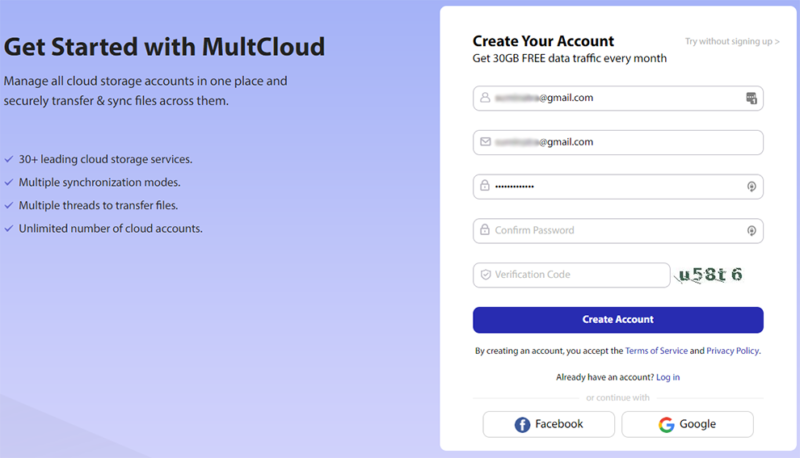
- Click on the “Add Cloud Drives” Icon
Once you’ve logged in, you will be greeted with MultCloud’s user interface. Click on the “add Cloud Drives” icon in the upper-left corner of the screen.
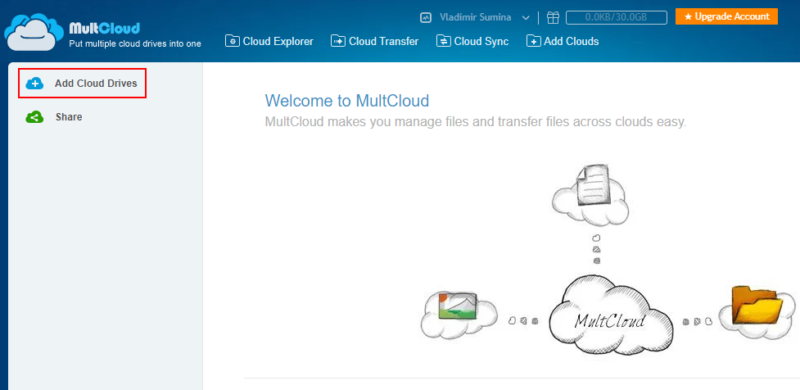
- Select the First Cloud Storage Account
In this section, you will be able to choose one of MultCloud’s supported cloud services and file transfer protocols. Go on and select Google Drive or whatever cloud storage you need to sync. Click on the “add Google Drive account” icon. Also, here you will be able to change your selected cloud storage’s display name if you wanted.
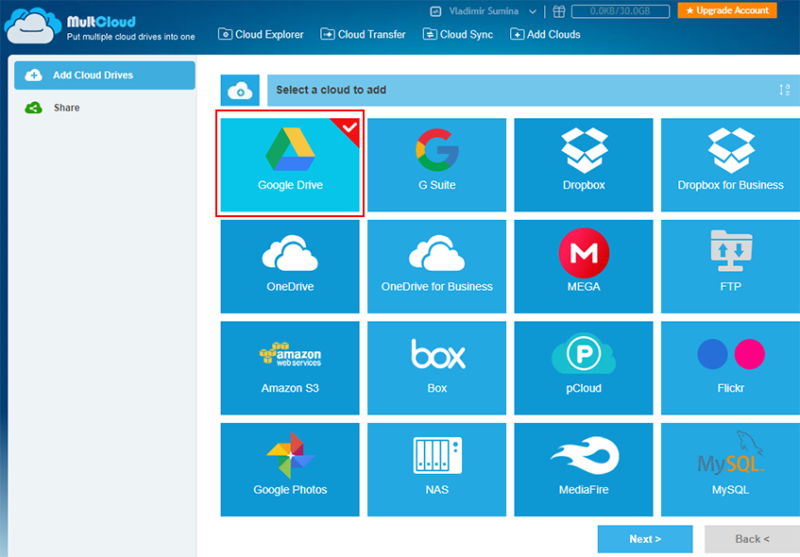
- Authorize MultCloud to Access Your Cloud Account
This is the final step before MultCloud can connect with Google Drive. In order for this to happen, MultCloud needs access to your Google Drive files, so click “allow” in order to authorize this.
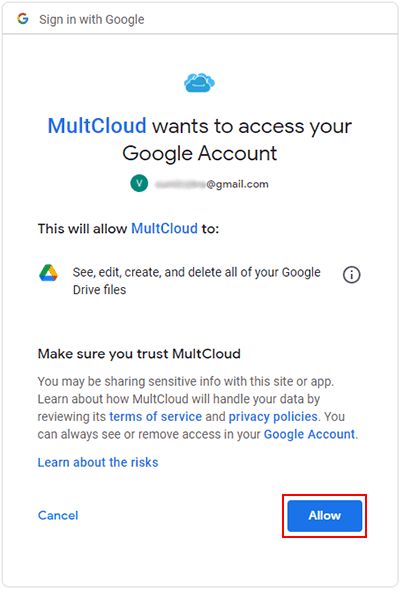
- Repeat the Previous Steps to Add OneDrive
Now that you have added Google Drive to your MultCloud, repeat steps two through four, but this time, select OneDrive instead. Regardless of which cloud storage service you select, this part of the process should stay the same.
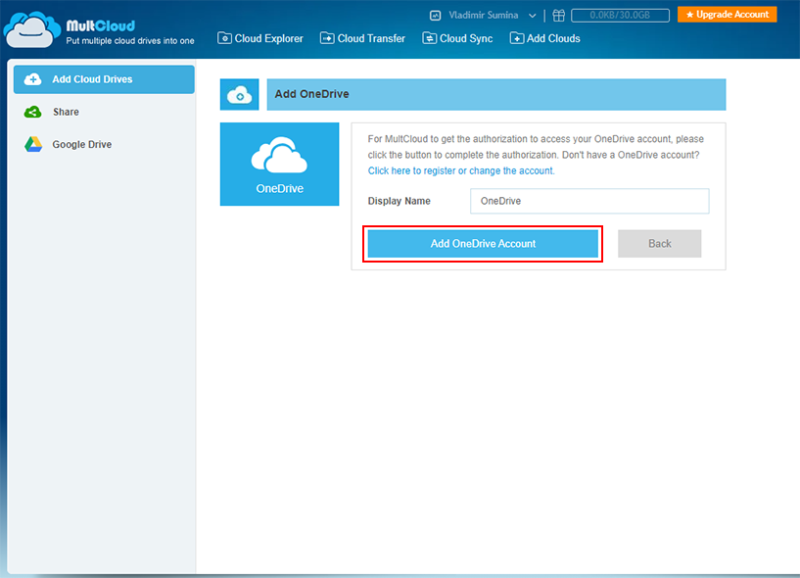
- Go Into the Cloud Sync Tab and Choose Which Services to Sync
You have successfully added Google Drive and OneDrive to MultCloud. Now, proceed to the cloud sync section. Add Google Drive as the source (the left square) and OneDrive as the destination (the right square).
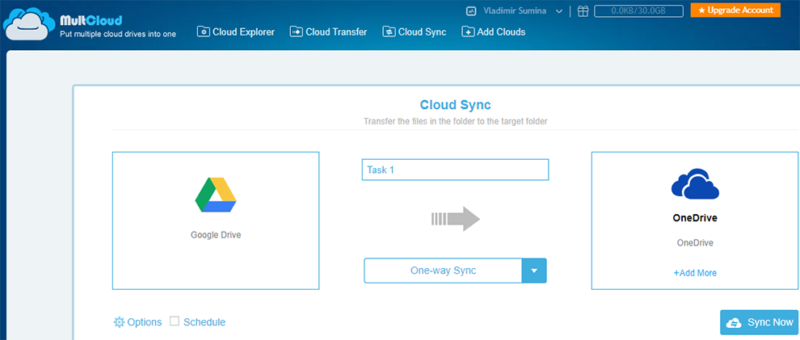
- Define the Sync Type
MultCloud has two sync types: one-way and two-way sync. With one-way sync, all the files added, modified or deleted in the source directory (Google Drive) will be copied to the destination directory (OneDrive). With two-way sync, every file you add to either the source or destination directories will be copied over, keeping the files the same on both. Choose one of these types.
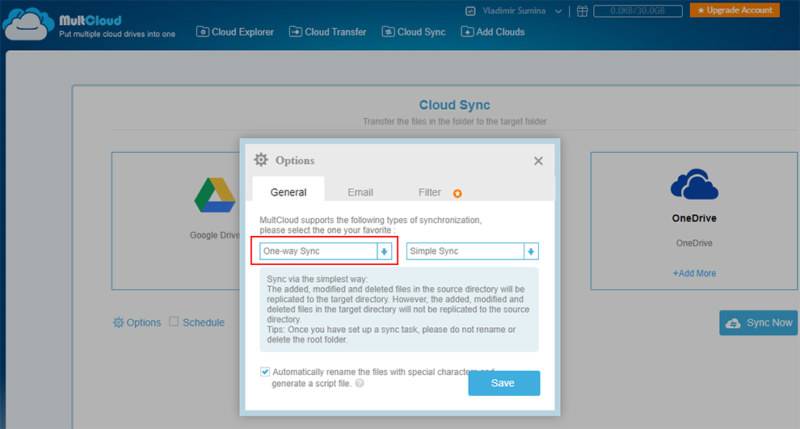
- Filter Your Cloud Files
MultCloud gives you the option to include or exclude certain cloud files from being transferred based on their name or file types. Please note that this step is optional since you can choose to transfer all of your files, but filtering provides you with an additional level of control.
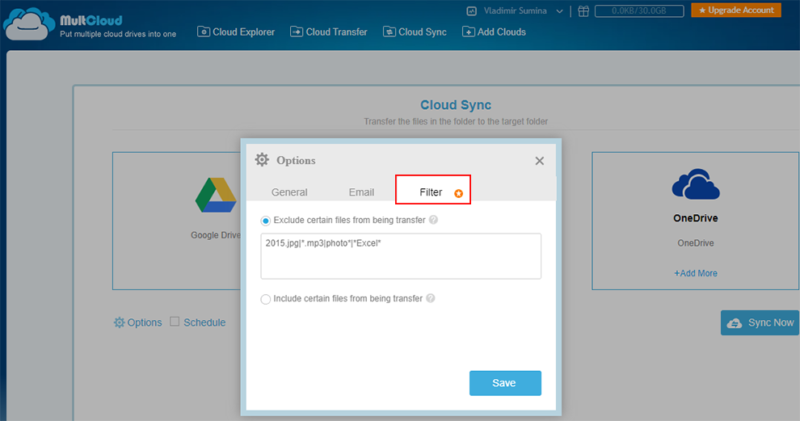
- Schedule Your Cloud Sync
Another optional step is to schedule the sync to take place at a specific time, such as the same day every week or month. Otherwise, the sync will run in real time.
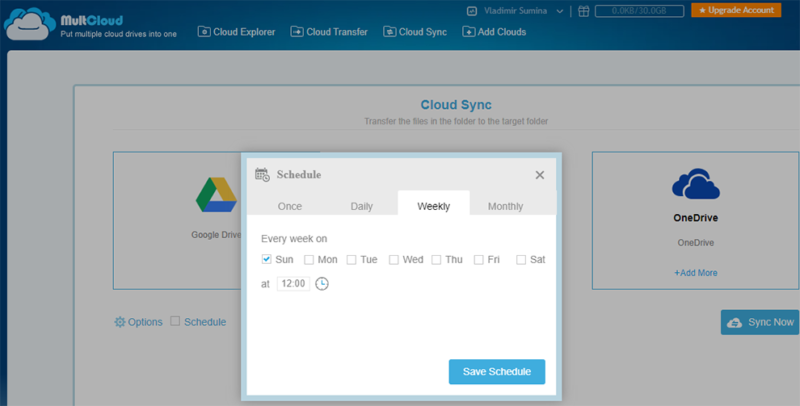
- Start Syncing
All that’s left is to click “sync now” and start your cloud-to-cloud sync process.
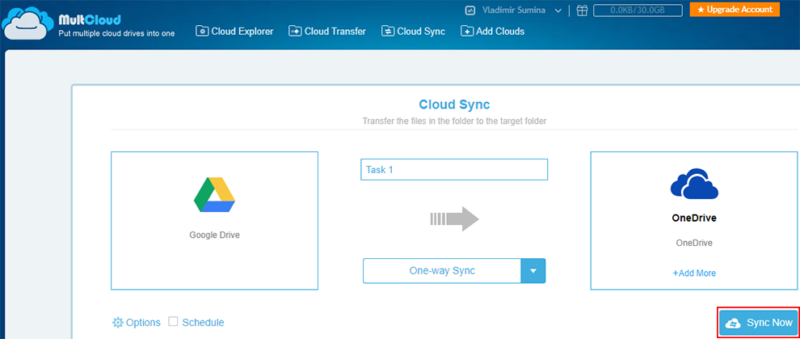
What Is Cloud Sync and How to Sync Cloud Storage?
Simply put, cloud sync is a way to access your files from many devices using the power of cloud storage. Cloud syncing makes sure that whenever you upload a file to your cloud storage, it’s immediately downloaded to all of your devices where you have the cloud app installed. When you update a cloud file, it’s simultaneously updated in the cloud and on all of your devices.
Multi-Cloud Sync: How and Why
Multi-cloud sync works in the same way normal cloud sync does, with one notable difference. This difference being that you will need to use a multi-cloud management service that will work as a sort of bridge between the cloud storage platforms in question. This manager handles the file sync, backup and transfer from one cloud account to another.
The benefits of having cloud-to-cloud sync relationships between your cloud storages include a much easier cloud migration process and backing up your cloud files. Without a cloud-to-cloud management service, you would need to first manually download your files from one cloud storage platform and then upload them to another.
This is especially time-consuming if you are dealing with large files or cloud services that can store unlimited amounts of data. Instead of performing this “by hand,” you can instead automate these processes with a multi-cloud manager like MultCloud or cloudHQ. Here are our best cloud storage for large files and the best unlimited cloud storage providers.
Final Thoughts: Sync Between Cloud Storage
There you have it: our step-by-step guide on how to sync between cloud storage using MultCloud. We hope that it has helped you to see how easy and useful syncing your cloud storage services can be. When you use a great service such as MultCloud, you open up new possibilities for cloud-to-cloud transfer and backup.
Have you ever used a cloud-to-cloud management service to sync your cloud services? What is your favorite multi-cloud manager and cloud storage service combo? Tell us in the comments below. As always, thank you for reading and learning how to sync cloud storage.
FAQ
The post How to Sync Cloud Services in 2024: Cloud Sync and Transfers appeared first on Cloudwards.






